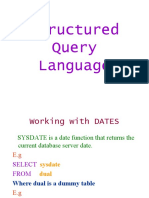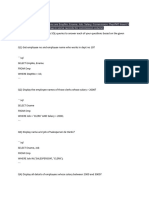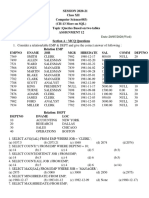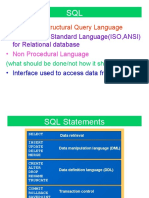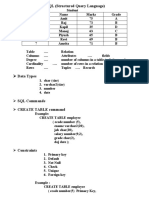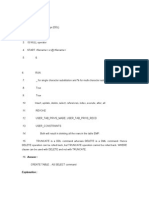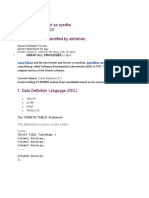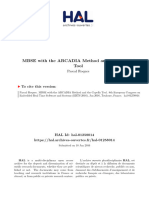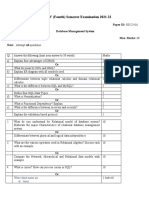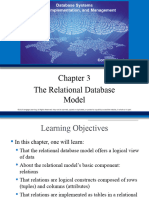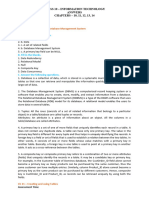0% found this document useful (0 votes)
81 views53 pagesSankalp For DBMS - SQL
The document provides an overview of SQL (Structured Query Language). It discusses that SQL is used for storing, manipulating, and retrieving data from databases. It also categorizes SQL statements into three categories: DDL for data definition, DML for data manipulation, and DCL for data control. Examples are given for common SQL statements like CREATE TABLE, ALTER TABLE, DROP TABLE, INSERT, UPDATE, DELETE, SELECT, etc. Wildcard characters and the LIKE operator used in conditions are also explained.
Uploaded by
Digambar DiwakarCopyright
© © All Rights Reserved
We take content rights seriously. If you suspect this is your content, claim it here.
Available Formats
Download as PDF, TXT or read online on Scribd
0% found this document useful (0 votes)
81 views53 pagesSankalp For DBMS - SQL
The document provides an overview of SQL (Structured Query Language). It discusses that SQL is used for storing, manipulating, and retrieving data from databases. It also categorizes SQL statements into three categories: DDL for data definition, DML for data manipulation, and DCL for data control. Examples are given for common SQL statements like CREATE TABLE, ALTER TABLE, DROP TABLE, INSERT, UPDATE, DELETE, SELECT, etc. Wildcard characters and the LIKE operator used in conditions are also explained.
Uploaded by
Digambar DiwakarCopyright
© © All Rights Reserved
We take content rights seriously. If you suspect this is your content, claim it here.
Available Formats
Download as PDF, TXT or read online on Scribd
/ 53


